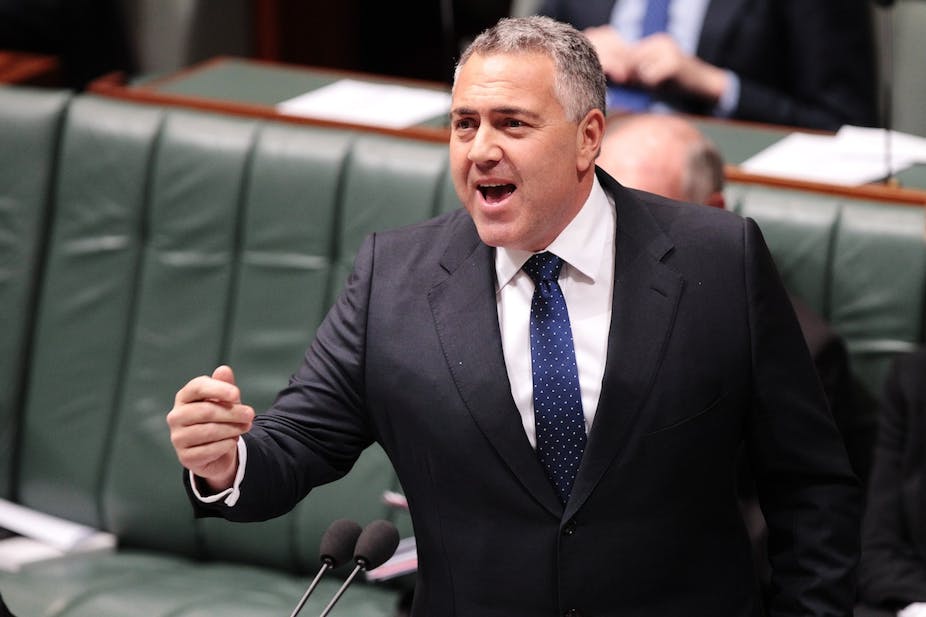UPDATE: This piece originally said the Asset Recycling Initiative had been passed by the Senate. Subsequent to publication, the amended legislation was rejected by the House of Representatives. The piece has been corrected to reflect these events.
The future of the federal government’s A$5 billion asset recycling initiative, part of Prime Minister Tony Abbott’s claim to be the “infrastructure prime minister”, is yet to be decided.
Under the initiative state and territory governments will receive from the federal government a payment of 15% of the sale value of privatised assets, so long as the proceeds are invested in new infrastructure projects. The legislation was amended in the Senate to allow parliament to veto the payments on a case-by-case basis, with a cost-benefit analysis by Infrastructure Australia before payments are approved.
But a key amendment that prevented the transfer of $3.5 billion from the Education Investment Fund to the infrastructure-incentive pool left a funding black hole. When the legislation returned to the House of Representatives to approve the amendments, the government used its majority to reject them. The Senate, with the support of Motoring Enthuasiasts’ Ricky Muir and Palmer United Senators, have insisted on the amendments. The process has stalled.
In his budget announcement, Treasurer Joe Hockey stated: “The government’s $5 billion investment through the asset recycling initiative will leverage close to $40 billion of new infrastructure investment from the states and territories.”
Economists have engaged in a long and inconclusive debate about the size of the “multiplier”, which is a measure of the extra expenditure induced by an additional dollar of government spending. Given that many economists doubt the multiplier is much greater than one, Treasurer Hockey’s claim of a multiplier value of eight is surely the high-water mark of Keynesian optimism. Rather, state governments are likely to repackage projects already planned so as to qualify for the incentive.
Correcting the consequences of competitive neutrality
It is better to view the asset recycling initiative as a correction of an unintended consequence of the National Competition Policy which, in 2001, required that state-owned enterprises pay company tax equivalents to their state government owners.
This so-called tax equivalence regime was designed to bring about neutrality between government businesses and competitors in the private sector.
Hydro Tasmania, for instance, competes with private sector generators. It pays dividends which are calculated as 70% of its operating result. This is, in turn, calculated before asset revaluations, impairments and tax. A company tax rate of 30% therefore implies a dividend of 49% (0.7 multiplied by 0.7) of the operating result; both the dividend and the company tax equivalent are paid to the Tasmanian government.
What is the impact of tax equivalence on the incentive to privatise?
On privatisation, the new owners receive dividends and pay company tax to the Commonwealth, so it involves a transfer of taxes from states to the Commonwealth. States have an incentive to privatise only if the sale price is sufficient to compensate for the loss of the income stream comprising both dividends and tax equivalents.
It might be thought that the simplest way to compensate states for the tax transfer would be to reimburse them for tax equivalents paid prior to privatisation. Such a scheme would almost certainly be too generous. Depending on the ownership, financing and tax incentives available to the purchaser, the company tax paid by the purchaser would most likely be less than the statutory rate.
For example, a foreign owner using aggressive debt finance could significantly cut its Australian company tax liabilities. In turn this behaviour might, in a competitive bidding process, be reflected in a somewhat higher offer price for the asset so that the state would capture some of the tax transfer.
By offering the states 15% of the sale price, the asset recycling initiative does not attempt to fine-tune the tax compensation. They might have thought that it was over- or under-compensation, but state and territory leaders at COAG would have viewed it as the best offer on the table; hence their acceptance of it.
Two other features of the scheme are worth noting.
The first is that the asset recycling incentive is not available to states wanting to privatise assets and use the proceeds to cut state debt. Rather, the scheme provides an incentive to invest in infrastructure while carrying debt on the state books; depending on realisations of company tax receipts, the incentive payment from the Commonwealth may also imply that its debt is also larger than otherwise.
But whether Commonwealth or state debt is involved, the same calculus as to the intergenerational effects of debt-financed infrastructure applies. If long-lived infrastructure investment realises sufficiently high returns, bond-financed investment is a good deal for future generations. High-yield projects of this kind should be undertaken with or without the asset recycling initiative.
Efficiency benefits will trump the multiplier
What the initiative does is to provide an incentive to improve the efficiency with which state-owned assets are used. This is particularly true for enterprises that are so poorly run that they presently pay no dividends or tax equivalents. States have little to lose from selling these assets. In this sense the asset recycling initiative provides a strong signal as to which privatisations should be prioritised.
Forestry Tasmania, for example, currently receives an annual subsidy of A$30 million to maintain its commercial viability. It is just possible (assuming community and environmental service contracts could be written) that new private owners adopting different harvesting practices, emphasising low volumes and high values, could turn a profit. In this situation overall efficiency could also be improved because private growers would not be crowded out by the activities of a state-subsidised competitor.
It is doubtful that Treasurer Hockey’s dream of unlocking an infrastructure revolution, with a multiplier of eight, will be realised. But if it improves the performance of state-owned assets the asset recycling initiative will be worthwhile.

